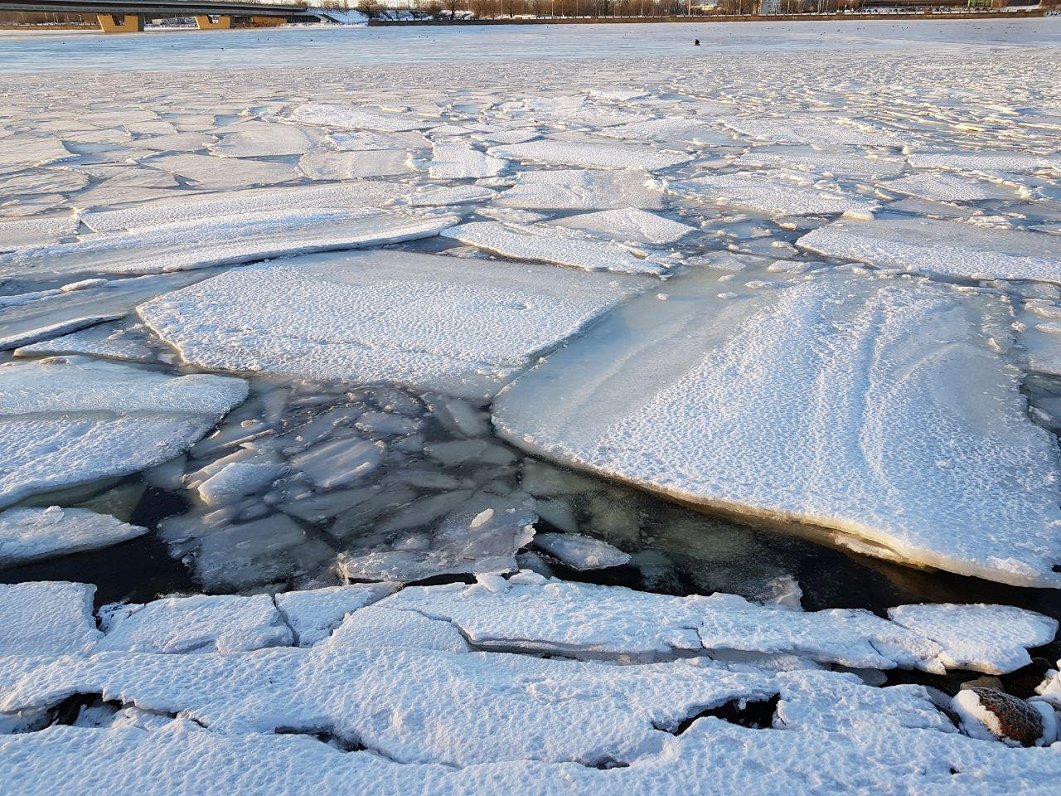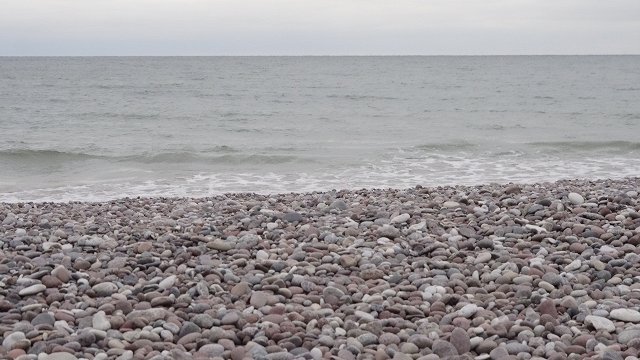At a time when a layer of ice is forming on water bodies, the State Fire and Rescue Service (VUGD) is calling on members of the public to be cautious and resist the urge to go ice fishing or skating, because the ice layer is still very thin and dangerous!
"Every year during the winter, dozens of people break through the ice and drown. In the last two days, the VUGD received six calls for cases of people falling through the ice - six people died and two were rescued," the VUGD said.
Irresponsible attitudes also put the lives of rescuers at risk, as the VUGD outlined in an account of a rescue it carried out on December 9 after reports of someone falling through the ice near Ludza in eastern Latvia.
VUGD crew members J.Klodāns and A.Guitans were the first to arrive at the scene and rushed to rescue the person in distress.
As J. Klodāns says: “At first, the ice looked durable, but when approaching 20 meters from the person to be rescued, it began to crack, so J. Klodāns continued to approach on his stomach. The rescuer kept repeating that he could no longer hold on and could not catch the stake I handed him... I could no longer hold the person being rescued above the water at a safe distance. So I decided, holding on to the rope held at the other end by a colleague, to approach closer and also to go through the ice. While in the water, I managed to keep the person afloat until help came.”
The VUGD says it should be remembered that the ice layer on water bodies does not form evenly. It is thicker on the edge, but may be thin in the middle. As a result, people often get the misconception that ice is safe when it is not.
What to do if you fall through the ice:
- keep calm!
- keep your head above water - you can tilt your head back a bit;
- do not move frantically, losing strength, instead move your legs evenly, as if turning bicycle pedals;
- breathe as slowly and deeply as possible;
- if possible, call out;
- if a bag or heavy coat pulls you down, try to remove them.
- the ice is thin where you broke in, but it should be more durable where you stood before you fell.
- turn your face to the place where you came from and put your hands on the ice, stretch your arms as far as possible. Try to lie on the edge of the ice with your chest and try to push yourself out of the water.
- do not need to get up immediately, it is better to roll away from the dangerous place. Climb to the shore on the same path you came.
- when going ashore do not stop, but run to the nearest warm place.
In order to successfully get out of the ice, anglers and others are advised to bring various aids - ice sticks or hooks, with the help of which you can pull yourself out more easily. A good solution is a full fishing suit with a swimming function or life jacket, which will allow you to float on the water after breaking into the ice.
What to do if you see someone falling in:
- call 112 immediately, giving the dispatcher must name the address or explain how to get to the scene, answer all questions of the dispatcher;
- to help, approach at a crawl or lie down without approaching the broken site itself. Try offering a rope, tied clothes, a long branch or some other object from a distance of about 2 - 5 meters. If there are several rescuers, it should be noted that they should be 2 - 3 meters apart;
As previously reported many times by LSM, Latvia and Lithuania have the unhappy distinction of being the European Union's leaders in deaths by drowning per capita. Last year there were 96 bodies pulled from the water by the VUGD in Latvia. This year's total is already 115, with two weeks to go.
The true number of people drowned is even higher, because in cases where the victim has already been brought ashore, the rescuers do not come to the scene. Consequently, such cases do not appear in the VUGD data. Nor are there any data on cases where the drowning persons have been rescued by members of the public.
Earlier this year President Levits led a call for more responsible behavior on and in the water, and the VUGD itself produced a series of warning videos.





























